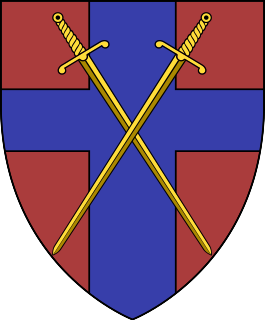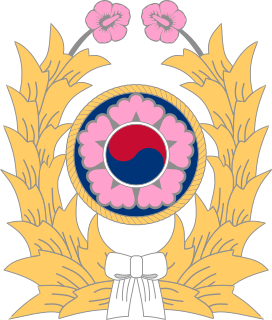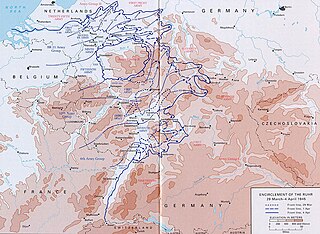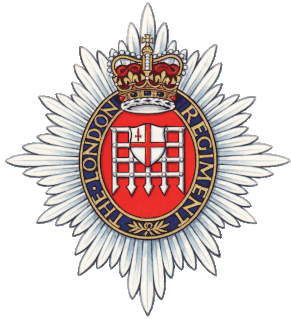See also
- 31st Indian Armoured Division, White Tiger Division (1940–1945)
Tiger Division may refer to:

The 101st Airborne Division is a light infantry division of the United States Army specializing in air assault operations. The Screaming Eagles were referred to as "the tip of the spear" by former U.S. Secretary of Defense Robert Gates and the most potent and tactically mobile of the U.S. Army's divisions by former Chief of Staff of the Army GEN Edward C. Meyer. The 101st Airborne can plan, coordinate, and execute multiple battalion-size air assault operations to seize key terrain and can work in austere environments with limited or degraded infrastructure. These operations can be conducted by mobile teams covering large distances and engaging enemy forces behind enemy lines. Its unique battlefield mobility and high level of training have kept it in the vanguard of U.S. land combat forces in recent conflicts, e.g. foreign internal defense and counterterrorism operations in Iraq and Afghanistan.

There have been two formations named British Army of the Rhine (BAOR). Both were originally occupation forces in Germany, one after the First World War, and the other after the Second World War. Both formations had areas of responsibility located around the German section of the River Rhine.

The Guards Armoured Division was an armoured division of the British Army during the Second World War. The division was created in the United Kingdom on 17 June 1941 during the Second World War from elements of the Guards units, the Grenadier Guards, Coldstream Guards, Scots Guards, Irish Guards, Welsh Guards, and the Household Cavalry.

The 10th Armored Division was an armored division of the United States Army in World War II. In the European Theater of Operations the 10th Armored Division was part of both the Twelfth United States Army Group and Sixth United States Army Group. Originally assigned to the Third United States Army under General George S. Patton, it saw action with the Seventh United States Army under General Alexander Patch near the conclusion of the war.

The 102nd Infantry Division ("Ozark") was a unit of the United States Army in World War II. The unit is currently active as the 102nd Training Division .

The 106th Infantry Division was a division of the United States Army formed for service during World War II. Two of its three regiments were overrun and surrounded in the initial days of the Battle of the Bulge, and they were forced to surrender to German forces on 19 December 1944. The division was never officially added to the troop list following the war, despite having been almost completely organized in Puerto Rico by 1948; subsequently, the War Department determined the division was not needed and inactivated the division headquarters in 1950.

The Republic of Korea Army, also known as the ROK Army or South Korean Army, is the army of South Korea, responsible for ground-based warfare. It is the largest of the military branches of the Republic of Korea Armed Forces with 420,000 members as of 2020. This size is maintained through conscription; South Korean men must complete 18 months of military service between the age of 18 and 35.

The 36th Indian Infantry Division was an infantry division of the Indian Army during the Second World War. The division was subsequently redesignated as a British Army formation, the 36th Infantry Division in September 1944. It served in India and during the Burma Campaign. After the end of the war it was disbanded and its remaining British units were transferred to the British 2nd Infantry Division.

The Army Ground Forces were one of the three autonomous components of the Army of the United States during World War II, the others being the Army Air Forces and Army Service Forces. Throughout their existence, Army Ground Forces were the largest training organization ever established in the United States. Its strength of 780,000 troops on 1 May 1942 grew to a peak of 2,200,000 by 1 July 1943. Thereafter its strength declined as units departed for overseas theaters.
Shoulder sleeve insignia (SSI) are cloth emblems worn on the shoulders of US Army uniforms to identify the primary headquarters to which a soldier is assigned. The SSI of some army divisions have become known in popular culture.

The 25th Indian Infantry Division was an infantry division of the Indian Army during World War II which fought in the Burma Campaign. It was re-raised within the post-independence Indian Army in 1948.

The Battle of Kassel was a four-day struggle between the U.S. Army and the German Army in April 1945 for Kassel, a medium-sized city 140 kilometers northeast of Frankfurt am Main, which also is the second-largest city in Hesse. The battle resulted as the U.S. Third Army pushed northeast from the region of Frankfurt and Mainz. The battle opened on April 1, 1945 and ended with an American victory three days later. Opposing the Third Army's 80th Infantry Division were an infantry replacement battalion, some heavy tanks, and anti-aircraft guns. Although the Germans gave battle at Kassel, their army was on the brink of collapse as the Western Allies and the Red Army made deep inroads into Germany. The defense of Kassel did not materially impede the Allied advance, and, one month after the battle ended, Germany was forced to capitulate.

Southern Command is a formation of the Indian Army, active since 1895. It has seen action during the integration of several Princely States into modern India, during the 1961 Indian liberation of Goa, and during the 1965 and 1971 Indo-Pakistani Wars. Lieutenant General Jai Singh Nain is the current Southern Army Commander.

Lieutenant General William Henry Harrison Morris Jr. was a senior United States Army officer who fought in both World War I and World War II.

The 125th Infantry Division was a German Army infantry division in World War II.

The First Canadian Army was a field army and a formation of the Canadian Army in World War II in which most Canadian elements serving in Northwest Europe were assigned. It served on the Western Front from July 1944 until May 1945.
The 135th Division was created in November 1948 under the Regulation of the Redesignations of All Organizations and Units of the Army, issued by Central Military Commission on November 1, 1948, basing on the 24th Division, 8th Column of the Northeastern Field Army. Its history can be traced to the 27th Brigade of Jireliao Military Region, formed in November 1945. Its first commander was Ding Sheng.
The 130th Army Division, now the 160th Heavy Combined Arms Brigade was a military formation of the People's Liberation Army Ground Force of the People's Republic of China. It is the only PLA division that took part in all three major wars of PLA after 1949.
The 122nd Division was created in November 1948 under the Regulation of the Redesignations of All Organizations and Units of the Army, issued by Central Military Commission on November 1, 1948, basing on the 11th Division, 4th Column of PLA Fourth Field Army. Its history could be trace to 6th Division of Shandong Military District, formed in August 1945.

The London Regiment is an infantry regiment in the Army Reserve of the British Army. It was raised in 1993, perpetuating the lineage of some but not all the battalions of an earlier regiment of the same name. The London Regiment is the only reserve infantry battalion of the Guards Division and the sole reserve infantry battalion based entirely in London District.